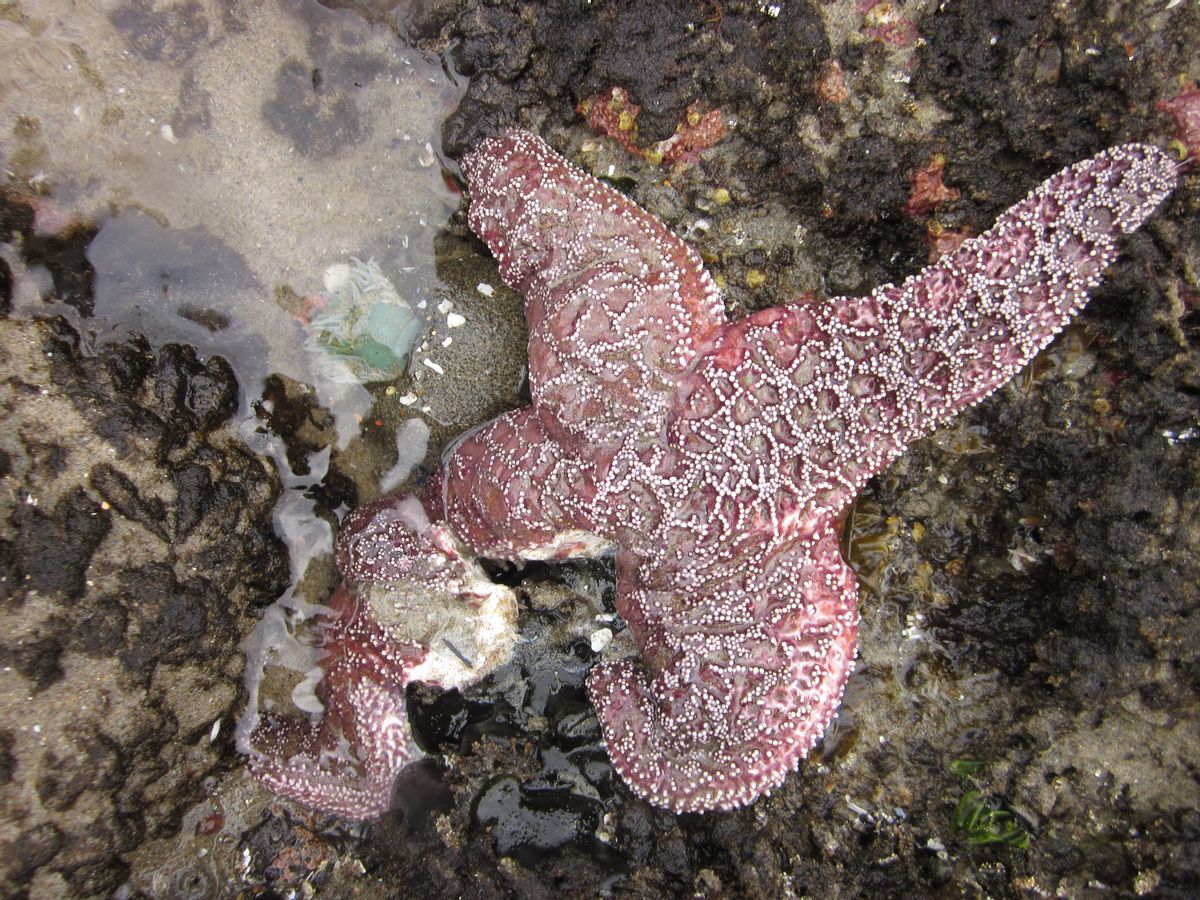Sea star wasting disease (SSWD) seems like a fairly brutal way to die if you're a starfish. White lesions start to grow all over your body and your arms skew unnaturally upward. Then you start to deflate and your arms (all five of them) start falling off. It's only a matter of days before you disintegrate completely.
A major new study published in the Proceedings of the National Academy of Sciences focuses in on what the illness that has decimated the starfish (or sea star, as scientists call the organism that is not a fish) population on the Northeast Pacific Coast --all the way from Alaska to Baja, California. The answer is a virus called "sea star associated densovirus."
"When you look on a scale of hundreds and hundreds of animals, which we did, it's very clear that the virus is associated with symptomatic sea stars," said Ian Hewson, a Cornell University microbiologist and lead author of the study in an interview with PBS News Hour. "Basically we've had to sort through to try to find the virus that is responsible for the disease.
Earthfix's Katie Campbell explains how an international team of scientists hunted down the mystery plague:
Tissue samples of sick and healthy starfish were analyzed for all the possible pathogens associated with diseased starfish. The team then conducted DNA sequencing of the viruses and compared them to all of the other known viruses. Once they had identified the leading candidate, they tested it by injecting the densovirus into healthy starfish in an aquarium. Then they watched to see if the disease took hold.
And sure enough it did.
The disease spread so quickly because of the large number of sea stars in a single area. "Having a huge number of individuals in a small area works like a reactor for this virus," said Hewson in an interview with National Geographic.
Now that the virus has been identified, Hewson and his team are working on predicting how the virus could infect and spread through other sea star populations across the globe. They are also studying urchins and sea cucumbers that are dying off, to see if the densovirus is to blame.
Still, the damage has largely been done in the region. "It has an extraordinarily significant effect on the biodiversity of the entire community," said Carol Blanchette, a biologist at the University of California at Santa Barbara in an interview with PBS. "Losing a predator like that is bound to have some pretty serious ecological consequences and we really don't know exactly how the system is going to look but we're quite certain that it's going to have an impact."

Shares